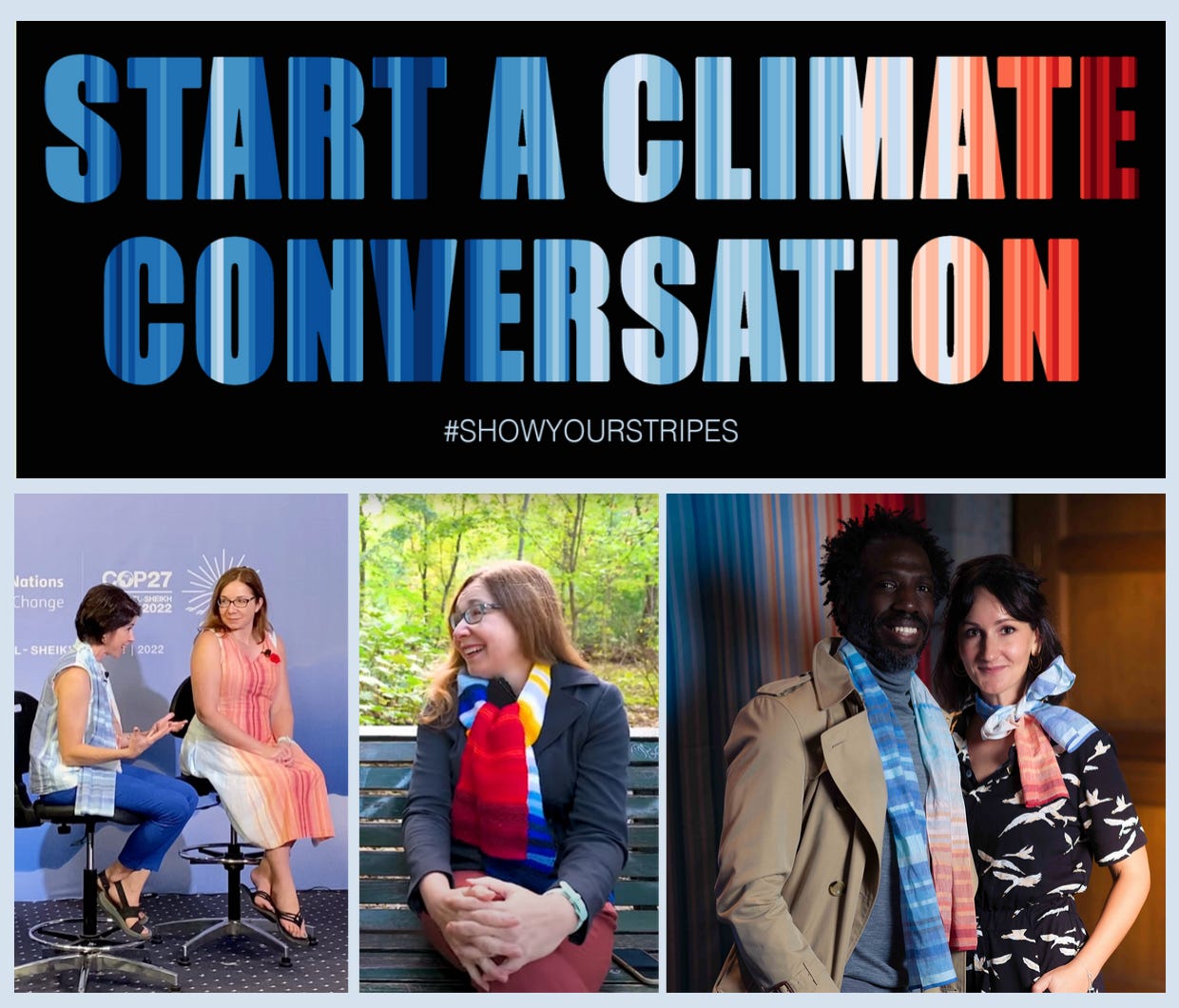Start a Climate Convo Without Saying a Word
#ShowYourStripes

June 21st was #ShowYourStripes day. What stripes, you ask? Your warming stripes, of course!
Created by climate scientist Ed Hawkins from the University of Reading, the warming stripes show how temperature has changed. Each stripe represents a year. A cooler than average year is blue; an average year is white; a warmer than average year is pink -- and you can guess what red means. After 2024, yet another record-breaking year, he had to add another new dark red to the global stripes.
Two years ago, I wrote about how the sporting world used warming stripes to get people talking about climate change: the Reading Football Club in Ed’s town featured red and blue “warming stripes” on the sleeves of their kit, which also happened to be made from recycled plastic bottles. That same year, the U.S. ski team donned newly designed, climate-change-themed race suits when they competed at the world championships.
Last year, even more people got on board. Envision Racing partnered with Ed to feature warming stripes on the team’s car and kit to promote their “Race against Climate Change” program, which supports the transition to e-mobility and renewable energy both on and off the track. For the 2024/2025 season, England’s Forest Green Football Club added a warming stripes design sewn into the neck lining of their kit. And most recently, the stripes concept has been vertically expanded to show how the atmosphere and the ocean are warming, too.

This week’s “what you can do” is simple – show off your stripes! Find your local stripes here, download the graphics, and share them on social media or even on the clothes you wear. You can find them on shoes, dresses, and beach towels by Nicole Kelner here, and many others offer t-shirts, ties, stickers and other wearables.
Last time I went to a COP meeting (the big global climate meetings that are held every year), I wore dress from House of Tammam (pictured above, left)--and still wear it today, often when I’m doing presentations. Last year, they launched a new Climate Stripe scarf collection in partnership with the European Space Agency (pictured above, right) and this year, they’re holding a “Hootenany” music event in London to raise awareness!
If you’re a knitter like me, you can get a pattern for the warming stripes from The Tempestry Project and knit a scarf that represents them. You can see me wearing a warming stripes scarf in this video with Climate Adam (also pictured above, middle.)
I’ve seen many creative ways people are showing their stripes on social media including painted fingernails, artwork to hang on the walls of your home, sidewalk chalk art, friendship bracelets, makeup, and dress shirts with 800,000 years of Antarctic temperature and CO2 data inside the cuff.
What do all of these things have in common? They open the door to a conversation about climate change. So #showyourstripes and get the conversation going today!




Sorry, but the Hawkins graph just takes too much explanation. As they say in politics, if you’re explaining, you’re losing. Can we just stick to a plain old x-y line plot?
I'm a bit confused. How does wearing our stripes help with the environment? Or is it only a way to open a conversation on climate change? How does talking about climate change help with the environment? Or is it a way for people to think about more on what they can do to help?